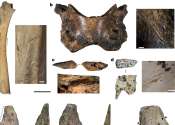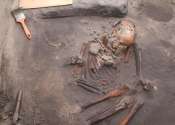Research reveals the most complete dinosaur discovered in the UK in a century
The most complete dinosaur discovered in this country in the last 100 years, with a pubic hip bone the size of a "dinner plate," has been described in a new paper published today in the Journal of Systematic Palaeontology.









